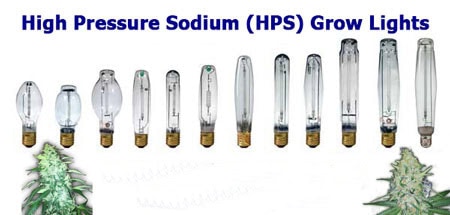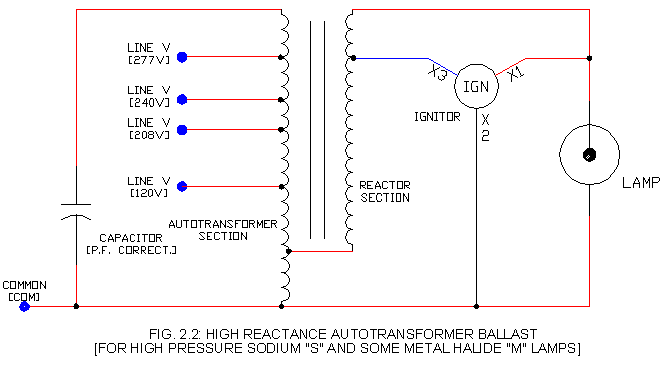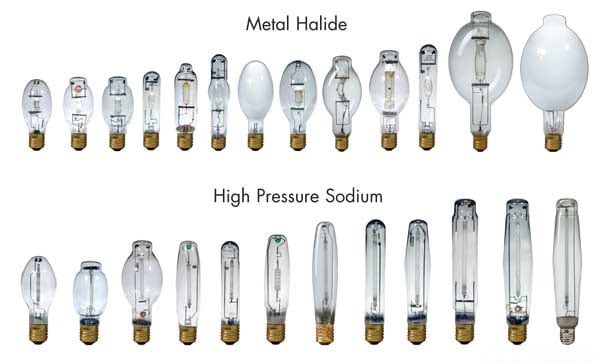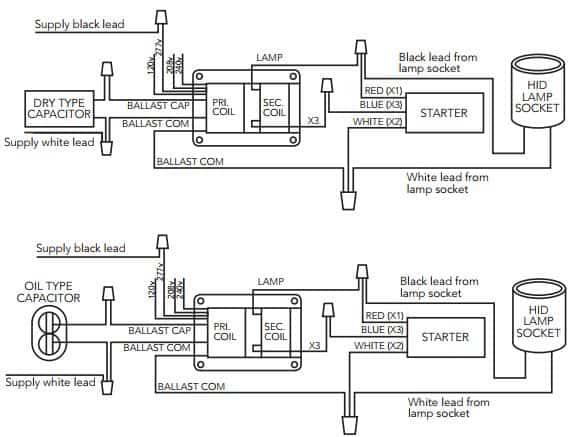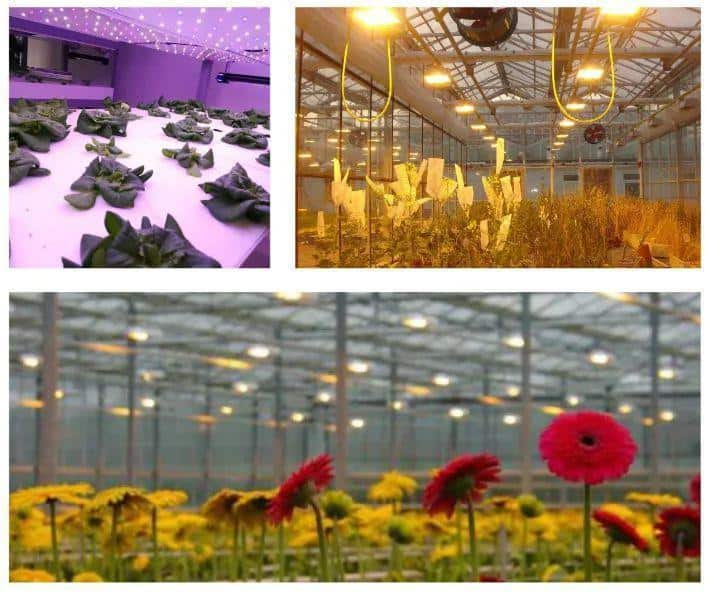High-pressure sodium (HPS) lights have been the go-to for outdoor and industrial lighting for a long time, providing reliable lighting for streets, parking lots, warehouses and other large areas. However, as the cost of electricity goes up, and businesses and cities look for ways to save energy, people are starting to wonder just how much electricity HPS lights use. In this article, we’ll talk about whether HPS lights are really energy efficient, how they compare to some of the new technologies and what you can do to save energy if you’re using them.
High-pressure sodium lights are somewhat energy efficient compared to some lighting technologies. They use less electricity than older incandescent bulbs, but they use more electricity than new technology like LEDs. How efficient they are depends on the wattage and what you’re using them for.
Let’s take a closer look at how much electricity high-pressure sodium lights use and how they compare to some of these other lighting technologies.
How High Pressure Sodium Lights Work
To understand the energy consumption of high pressure sodium lights, it’s important to first know how they work. HPS lights belong to the high-intensity discharge (HID) family, which produces light by passing an electrical current through a mixture of gases, primarily sodium. When this gas is heated to a high temperature, it emits a bright, yellow-orange light that is widely recognized in street lighting.
One of the main advantages of HPS lights is their high lumen output, which refers to the amount of light produced per watt of electricity used. HPS lights typically have a higher lumen-per-watt ratio than older technologies like incandescent and fluorescent bulbs. This means that HPS lights are more efficient at converting electricity into light.
However, they still generate significant heat, and the electrical current must be regulated by a HPS ballast to ensure stable operation. This ballast also contributes to the overall energy consumption of the system.
Understanding how these lamps operate provides the foundation for evaluating their energy efficiency and consumption compared to other lighting technologies.
Energy Consumption of High Pressure Sodium Lights
High pressure sodium lights come in a variety of wattages, from small 35-watt bulbs to large 1000-watt lamps, and their energy consumption depends on the wattage of the bulb in use. Here’s a breakdown of how much electricity HPS lights use based on their wattage:
- A 250-watt HPS lamp consumes 250 watts per hour. If it’s used for 10 hours a day, it will use 2.5 kilowatt-hours (kWh) of electricity each day.
- A 400-watt HPS lamp consumes 400 watts per hour. If it’s used for the same 10-hour period, it will consume 4 kWh per day.
When you multiply this energy usage by the number of HPS lights in a large area, such as an industrial complex or a street lighting system, the electricity consumption can become significant. For instance, if a city runs 1,000 HPS streetlights, each using 250 watts for 12 hours a day, the daily energy consumption would reach 3,000 kWh. Over time, this can add up to substantial costs.
However, despite the relatively high energy consumption, HPS lights are still more efficient than traditional incandescent or halogen lights. For example, incandescent bulbs convert most of the energy they consume into heat rather than light, making them highly inefficient.
In contrast, HPS lights make better use of the electricity they consume, but they still fall short of the energy savings offered by modern lighting solutions like LEDs.
Comparing HPS Lights to Other Lighting Technologies
In terms of electricity consumption and energy efficiency, high pressure sodium lights fall between older technologies and modern, energy-efficient alternatives. Here’s how they compare to other popular lighting technologies:
- HPS vs. Incandescent: High pressure sodium lights are far more energy-efficient than incandescent bulbs. Incandescent bulbs waste about 90% of the energy they consume as heat, leaving only a small fraction for light production. HPS lights, on the other hand, convert a larger percentage of their electricity into light, producing several times more lumens per watt than incandescent bulbs.
- HPS vs. Metal Halide: Metal halide (MH) lights are another type of HID lamp, and they are often used in similar applications as HPS lights. While HPS lights are more energy-efficient in terms of lumens per watt, metal halide lamps offer better color rendering, which makes them preferable for certain settings, like sports arenas or retail spaces. That said, HPS lights use less electricity and tend to last longer than metal halide lamps.
- HPS vs. LED: LED technology is currently the most energy-efficient option available. LEDs use significantly less electricity than HPS lights while producing an equal or even greater amount of light. LED lights also have a longer lifespan, meaning they don’t need to be replaced as often, further reducing operational costs. For example, an LED light can use up to 70% less energy than an equivalent HPS light, making them the preferred choice for new installations in many industries.
This comparison highlights that while HPS lights are more efficient than some older lighting technologies, they consume more electricity than the newer, more efficient LED systems.
The Cost of Operating High Pressure Sodium Lights
The cost of running high pressure sodium lights depends on how much electricity they use and the local cost of electricity. To better understand the operating costs, let’s consider a typical example:
If you have a 400-watt HPS lamp that runs for 12 hours a day in a region where the cost of electricity is $0.12 per kWh, here’s how much electricity the light will use daily:
- 400 watts × 12 hours = 4.8 kWh of electricity per day
- 4.8 kWh × $0.12 = $0.58 per day for one light
If this single lamp operates every day for a month, the total cost would be around $17.40 per month. Over the course of a year, the cost of running this one HPS light would be approximately $210. Now, if you’re operating dozens or hundreds of these lights in a large facility, the total cost could reach into the thousands of dollars annually.
This is where modern alternatives like LEDs provide significant savings. An equivalent LED light could cut electricity costs by more than half, reducing the total operating cost and providing a rapid return on investment.
Are High Pressure Sodium Lights Energy-Efficient?
When it comes to energy efficiency, high pressure sodium lights perform moderately well compared to older lighting technologies. Their high lumen output per watt makes them more efficient than incandescent or fluorescent bulbs, which are often still in use in outdated lighting systems. However, HPS lights are no longer considered the most efficient option available today.
A significant drawback of HPS lights is lumen depreciation—a phenomenon where the bulb’s light output decreases over time, even though it continues to use the same amount of electricity. This means that over time, HPS lamps consume the same energy but provide less light, leading to reduced efficiency.
In contrast, LED lights offer consistent light output throughout their lifespan, which can exceed 50,000 hours, far outlasting the 15,000 to 24,000-hour lifespan of HPS lamps. For those focused on reducing electricity consumption and operational costs, upgrading from HPS to LED is a smart long-term investment.
Reducing Electricity Consumption with HPS Lights
If you are still using high pressure sodium lights and are not ready to fully transition to LEDs, there are several ways to reduce electricity consumption and improve efficiency:
- Install Timers or Motion Sensors: Using timers or motion sensors can reduce the amount of time that HPS lights are on, especially in areas where lighting is only needed at certain times or when activity is detected.
- Use Dimming Controls: Some HPS lighting systems come with dimming options, allowing you to reduce power usage during off-peak hours when full brightness is not required.
- Perform Regular Maintenance: Keeping the light fixtures clean and ensuring that the bulbs and ballasts are working properly can help maintain optimal light output and efficiency.
- Upgrade Ballasts: Newer, more energy-efficient ballasts are available for HPS lighting systems. These ballasts can help reduce electricity consumption by providing more efficient regulation of the electrical current.
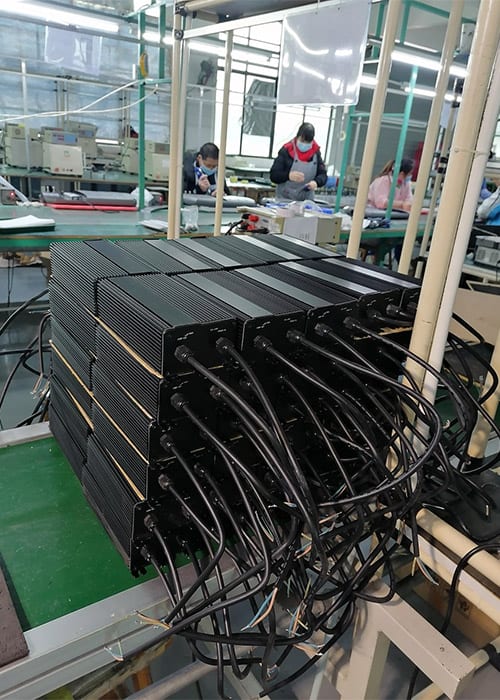
Final Words:
High-pressure sodium lights use a moderate amount of electricity compared to older lighting technologies, but they are not as efficient as modern options like LEDs. While they use less electricity than incandescent or metal halide lights, they use more electricity than LEDs, and they lose light output over time.
For businesses or cities worried about saving electricity, switching from HPS to LED lights can save a lot of money and provide better performance in the long run.

